Romanian students engage with Europeana WWI content
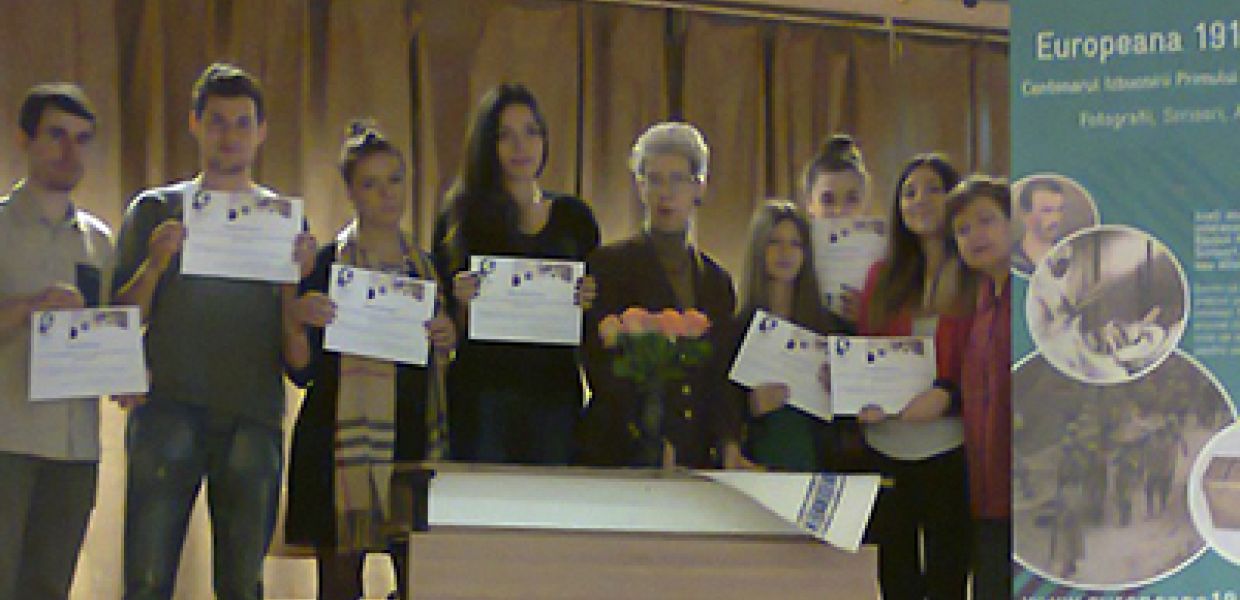
Guest blog by Cristina Roiu, Coordinator of Europeana 1914-1918 Bucharest Campaign
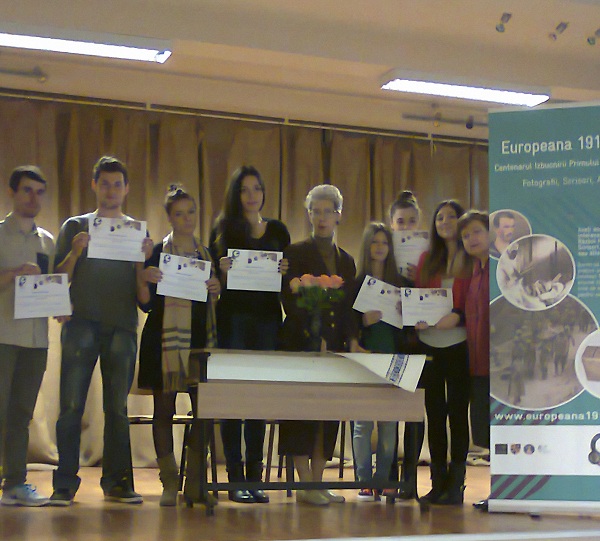
On 16 May, students from some Bucharest colleges met with the Europeana 1914-1918 team at the Ion Neculce National College, where they received diplomas for the best First World War-related essays. This meeting was part of a series of workshops and meetings that took place in Bucharest during the ´School Otherwise Week´ (7-11 April 2014). During this week, all Romanian schools organised extracurricular, educational activities as part of the educational programme ´To Know More, to be Better´, a non-formal national educational project. It was the perfect occasion to organise some workshops and educational activities involving pupils from grades three to 12 grade (10-18 years old) and the Europeana 1914-1918 resources.
Three major colleges from Bucharest - I.Neculce, Gh. Lazar and I.L. Caragiale and the Titu Maiorescu Secondary school took part in these activities.
The students from higher grades (9-12) wrote interesting essays and made presentations mainly using the Europeana 1914 -1918 Romanian resources.
The French and English teachers together with their students found inspirational resources among the impressive French and English archives of Europeana 1914-1918. Some of the themes of the children's essays were about children in war, Queen Maria of Romania and WWI and the support of the home families for the soldiers.
The essays were presented during work sessions where the high school students were grouped into three teams - representing terrestrial, aerial and naval warfare.
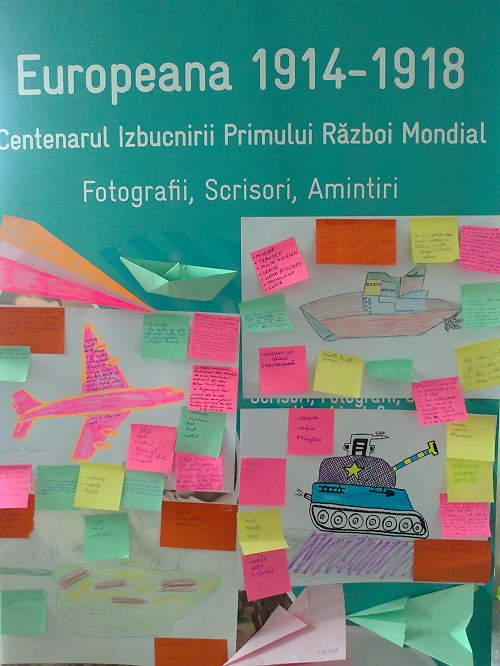
As stories were presented, the students tried to build mental images of the war from the point of view of the stories. They discussed why it was important for them to keep alive these experiences and images.
At the end of the sessions, each participant had to write three words associated with war and one phrase describing their experience with the Europeana 1914-1918 resources.
For the younger children, a different approach was chosen: The work sessions began with a presentation of images from the WWI British Library educational site and from the Europeana 1914-1918 Romanian archive, illustrating distinct features of WWI: gas masks, battles in the night, the first ever army tanks and machine guns in war etc. In this manner, the children received important information about WWI: the date of the outbreak of WWI in Europe, the date of Romania’s entry into the war and so on.
They were invited to choose three pictures that impressed them the most, explain their choice and write three things that could best describe the war.
Below are 2 of the images (both from the British Library’ s educational website) that most impressed the children.
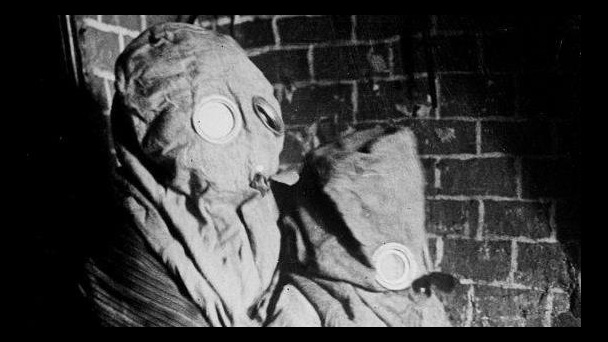
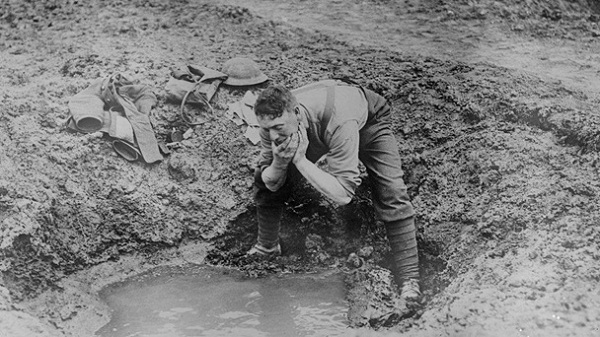
A British soldier is washing in the stagnant water that has collected in a shell crater. CC0 Bibliotheque Nationale de France
The children’s choices showed how moved they were about the difficult war conditions faced by ordinary people and soldiers in their daily lives.
The activities developed during the School Otherwise Week were highly appreciated both by teachers and students, who expressed the wish to continue this partnership with Europeana.
Ms. Rodica Tudorica, teacher of History at the Ion Neculce College said about the Europeana 1914-1918 website:
´It is all about a lived history, where scientific information goes hand-in-hand with the feeling; the sense with the sensibility and emotion. Every piece of historical information is filtered by the personal experience of the storyteller, so that subjective and objective, general and specific are melting together in a comprehensive and multifaceted view.’
